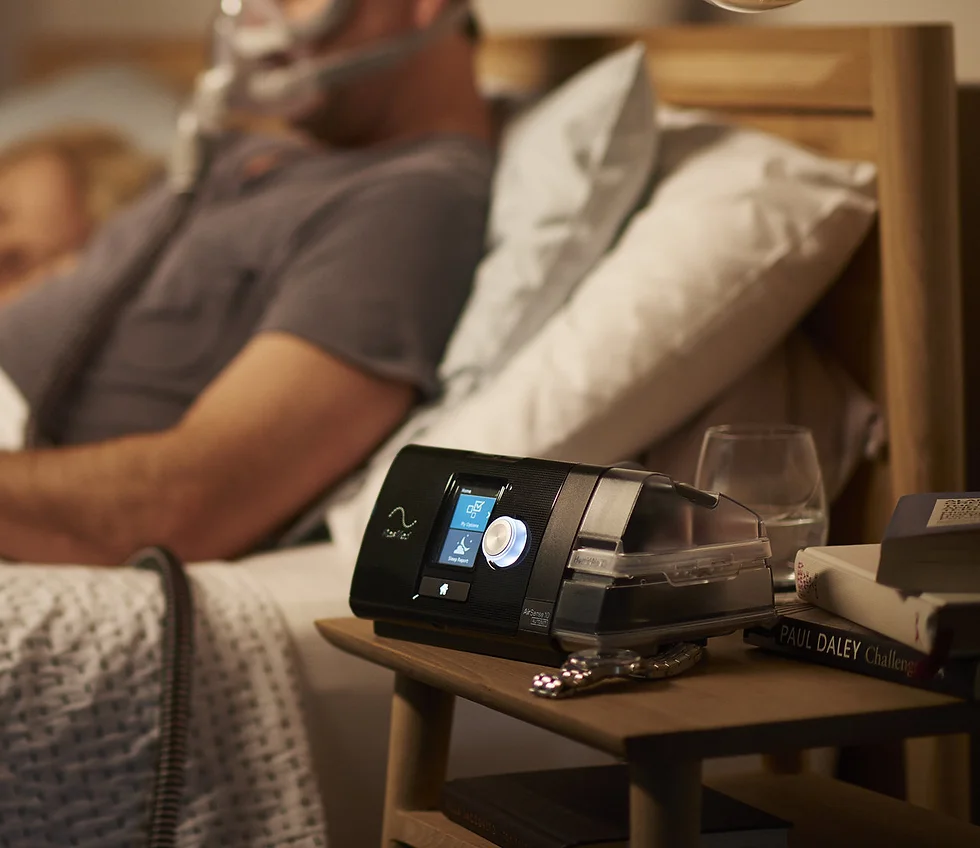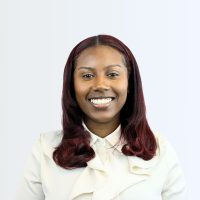Fact Checked
Intus Healthcare’s writers, customer service team, and sleep experts review and ensure this information is accurate.
Last updated on March 31st, 2025 at 10:54 am
Sleep Apnoea is a common sleep disorder characterised by interruptions in breathing during sleep. While it can affect people of all ages and genders, it often goes undiagnosed, especially in women.
Whilst Obstructive Sleep Apnoea is still common predominantly in males, recent studies suggest that as women get older and enter menopause, they are just as likely to develop the disorder(1).
This article highlights the symptoms, the impact on women, potential pitfalls in diagnosis, and strategies to relieve symptoms. By understanding these aspects, more women can take control of their health and improve their quality of life.
Table of Contents
Signs of Sleep Apnoea In Women
While the classic symptoms of Sleep Apnoea include loud snoring and choking or gasping during sleep, women may experience different or more subtle signs. Here are some common signs of Sleep Apnoea in women:
- Insomnia: Difficulty initiating or maintaining sleep can be a symptom of insomnia, as the body’s frequent awakenings disrupt the natural sleep cycles.
- Fatigue: Feeling excessively tired during the day, even after a full night’s sleep, is a common symptom of Sleep Apnoea in women.
- Morning headaches: Waking up with a headache is a sign that oxygen levels in the brain may have dropped during the night.
- Mood swings: Irritability, mood swings, and even depression can be linked to Sleep Apnoea in women due to chronic sleep disruption.
- Difficulty concentrating: Cognitive impairments, memory problems, and reduced attention span are common symptoms, often mistaken for stress or ageing.
- Frequent urination at night: Night-time awakenings to use the bathroom can be a common symptom as Sleep Apnoea can lead to oxygen desaturation in the blood, causing the brain to briefly wake up to restore normal breathing. These frequent awakenings can disrupt sleep and make individuals more aware of other bodily sensations, including the need to urinate. .
- Reduced libido: OSA can lead to hormonal imbalances and reduced sex drive in women.
- Dry throat in the morning: While a dry throat can be associated with the condition, it is not a definitive symptom on its own.
Women at high risk of Sleep Apnoea are still likely to experience chronic snoring and drowsiness. Yet not everyone with the disorder will snore, and sometimes, when discussing potential symptoms with a doctor, the patient may not be aware of their snoring.
Therefore, awareness of other signs and symptoms is important in diagnosing the condition.
Testing for Sleep Apnoea in Women
Diagnosis is critical in receiving the appropriate treatment for Sleep Apnoea and reducing the symptoms that can strain personal and professional lives.

Home Sleep Apnoea Test
The test monitors your heart rate, snoring intensity, blood oxygen levels, body positioning, and more, providing accuracy comparable to testing used in sleep clinics for in-depth sleep analysis.
The simple-to-use test takes just one night to complete, and results are returned within two working days after completion.
Our experienced NHS-qualified sleep professionals independently analyse all studies, providing follow-up advice and support.
How Sleep Apnoea Affects Women
Nearly 1 in 5 women have sleep apnoea, however, 9 in 10 women with sleep apnoea don’t know they have it(2).. They are, therefore, at an increased risk of health issues such as heart attack, high blood pressure, stroke, type 2 diabetes and depression.
Untreated OSA can have severe consequences on women’s health and overall well-being. Here are some ways in which it can impact them:
- Cardiovascular health: The condition increases the risk of high blood pressure, heart disease, and stroke. Women with Sleep Apnoea are also more likely to develop irregular heart rhythms.
- Hormonal imbalances: It can disrupt the endocrine system, leading to hormonal imbalances, irregular menstruation, and fertility issues.
- Diabetes risk: Women with Sleep Apnoea have an increased risk of developing type 2 diabetes.
- Complications during pregnancy: During pregnancy, the condition can lead to complications such as pre-eclampsia, gestational diabetes, and low birth weight.
- Hypertension: Lack of sleep is associated with high blood pressure (hypertension); it can also occasionally be associated with low blood pressure (hypotension).
- Insomnia: Untreated OSA can cause sleeplessness and make it difficult to fall asleep.
- Weight gain and obesity: The condition can disrupt hormones that regulate appetite, leading to weight gain and difficulty in losing weight.
- Hypothyroidism: Over time, untreated sleep apnoea can lead to chronic loss of sleep, which may contribute to enhanced hypothyroidism symptoms.
- Reduced quality of life: Persistent fatigue and daytime sleepiness can impact daily functioning, relationships, and overall quality of life.
Diagnosis and Misdiagnosis
Sleep Apnoea in women is often underdiagnosed or misdiagnosed due to several factors:
- Different Symptoms: As mentioned earlier, women may exhibit different symptoms than men, leading healthcare providers to attribute them to other conditions such as depression, anxiety, or menopause.
- Lack of Awareness: Both women and healthcare professionals may not be aware of the prevalence of Sleep Apnoea in females, leading to misdiagnoses.
- Reluctance to Seek Help: Women may be less likely to seek medical attention for their sleep problems, believing they are simply experiencing stress or insomnia.
- Misinterpretation of Symptoms: Some symptoms, such as fatigue and mood swings, may be incorrectly attributed to ageing or the demands of daily life.
- Lack of Research: Historically, research has focused more on men, leading to a knowledge gap regarding its prevalence and impact on women.
When misdiagnosed, other conditions can be unnecessarily treated or over-treated. At the same time, the issue of the condition is untouched and left to continue to disrupt the quality of a sufferer’s life.
Specific Risk Factors for Women
Certain factors increase a woman’s risk of developing Sleep Apnoea:
- Obesity: Excess weight, especially around the neck, can increase the risk of OSA.
- Age: The risk of OSA increases with age, but it can affect women of all ages.
- Family History: Having family members with the condition can elevate the risk.
- Menopause: Hormonal changes during menopause can contribute to the development of the condition.
- Pregnancy: Hormonal changes and weight gain during pregnancy can increase the likelihood of developing the condition.
- Polycystic Ovary Syndrome (PCOS): Women with PCOS are at a higher risk due to hormonal imbalances and obesity.
- Smoking and Alcohol: Smoking and excessive alcohol consumption can relax the muscles in the throat, increasing the risk of OSA.
Of these, a factor which exclusively places women at more risk to Sleep Apnoea is entering menopause. The prevalence of the sleep disorder increases with menopause as the levels of the hormones oestrogen and progesterone decline. These hormones help with the muscle tone in the airways, preventing them from collapsing.
Pregnancy can also put women at a higher risk of Sleep Apnoea, which could be down to an increase in weight and neck size, sleep pattern changes or anatomical changes which may affect breathing. The condition can also lead to pregnancy complications, with high blood pressure more likely with this disorder. Also, women with the common disorder polycystic ovary syndrome (PCOS) can be at an increased risk. One study reports that the risk for OSA is at least 5-to-10-fold higher in women with PCOS compared to those without PCOS(3).
A Rising Problem
26% of adults between 30 and 70 have Sleep Apnoea, with many remaining undiagnosed(4).
Although awareness of the disorder in women is growing, misunderstanding of the variations in symptoms and the more subtle breathing difficulties experienced by women with Sleep Apnoea are reasons for the high rate of undiagnosed female sufferers.
Managing and Easing Sleep Apnoea Symptoms in Women
If you suffer from mild to moderate Sleep Apnoea, your doctor may recommend some lifestyle changes.
Lifestyle adjustments to help reduce symptoms:
- Weight Management: As obesity is strongly linked with the disorder, if you are overweight, you may be advised to lose weight. Achieving and maintaining a healthy weight can significantly improve symptoms.
- Regular Exercise: Engaging in regular physical activity can help improve sleep quality and reduce the condition’s severity.
- Dietary Changes: Eating a balanced and nutritional diet and avoiding heavy meals and alcohol close to bedtime can minimise night-time disruptions.
Treatment Options
CPAP Therapy
A CPAP machine delivers a steady air flow through a mask, preventing airway obstruction. This is one of the most effective treatments for Sleep Apnoea.
To learn more about CPAP therapy, click the button below; you will be redirected to our CPAP equipment site, Intus Healthcare.

Positional Therapy: Sleeping on your side instead of your back can help prevent airway collapse.
Oral Appliances: Dentists can provide customised devices that reposition the jaw and tongue to keep the airway open during sleep.
Surgical Options: In severe cases, surgical interventions, such as uvulopalatopharyngoplasty (UPPP) or bariatric surgery, may be considered.
Hormone Therapy: For women with hormonal imbalances contributing to Sleep Apnoea, hormone therapy may be recommended.
Cognitive-Behavioural Therapy: CBT can help address insomnia and other sleep-related issues.
Sleep Apnoea is a significant health concern that affects women more often than we might realize. Recognising the symptoms and risk factors specific to women is crucial in preventing misdiagnosis and improving overall health outcomes. If you or someone you know exhibits symptoms of the sleep condition, seeking professional evaluation and treatment is essential. With the right strategies, it can be managed, allowing women to regain their energy, mood, and quality of life.
Sleep Apnoea explained
Sleep Apnoea is a sleep disorder that occurs when an individual’s breathing is repeatedly interrupted during sleep. These interruptions, called apnoeas, can last for several seconds to minutes and may occur frequently throughout the night. There are three main types:
Obstructive Sleep Apnoea (OSA): This is the most common type and occurs when the muscles in the back of the throat relax excessively, causing a physical blockage of the airway.
Central Sleep Apnoea (CSA): CSA is less common and results from the brain failing to signal the muscles to breathe due to instability in the respiratory control centre.
Complex or Mixed Sleep Apnoea: This type is a combination of OSA and CSA.
OSA can affect anyone, regardless of age or gender. However, it is often underdiagnosed in women, primarily due to differences in symptoms and risk factors.
About Our Editorial Team
Danni is a degree-educated content writer passionate about helping those with Sleep Apnoea sleep better; she works closely with our clinical and customer care teams to ensure that each article is thoroughly researched and accurate.
Her writing aims to inform, support, and advise readers about Sleep Apnoea, helping to raise awareness and promote effective treatment options.
She has written many health-focused articles, reaching hundreds of readers annually, to help people sleep better and live healthier lives.
Lateisha King is an experienced Sleep Clinician with advanced training in polysomnography and respiratory health.
With over six years of experience, including at the prestigious Guy’s and St Thomas’ NHS Foundation Trust Hospital, she has conducted and reviewed more than 500 diagnostic sleep studies.
Her expertise in sleep science ensures that all articles align with the latest data and treatment protocols, providing readers with trustworthy and practical advice to improve their sleep health and overall well-being.
References:
- Ayub, S. and Won, C.H. (2019) ‘Obstructive sleep apnea in women’, Journal of Sleep Medicine. Available at: https://www.e-jsm.org/journal/view.php?number=262. Accessed: 11.10.2024.
- SWHR (2017) Women & Sleep apnea – SWHR, SWHR. Available at: https://swhr.org/wp-content/uploads/2017/11/SWHR_Women-Sleep-Apnea.pdf. Accessed: 05.10.2023.
- Ehrmann, D.A. (2012) ‘Metabolic dysfunction in PCOS: Relationship to obstructive sleep apnea’, Steroids. Available at: https://pubmed.ncbi.nlm.nih.gov/22178788/. Accessed: 11.10.2024.
- Santilli, M. et al. (2021) ‘Prevalence of obstructive sleep apnea syndrome: A single-center retrospective study’, International Journal of Environmental Research and Public Health. Available at: https://www.ncbi.nlm.nih.gov/pmc/articles/PMC8508429/. Accessed: 11.10.2024.





